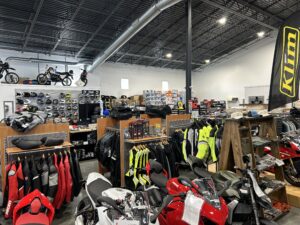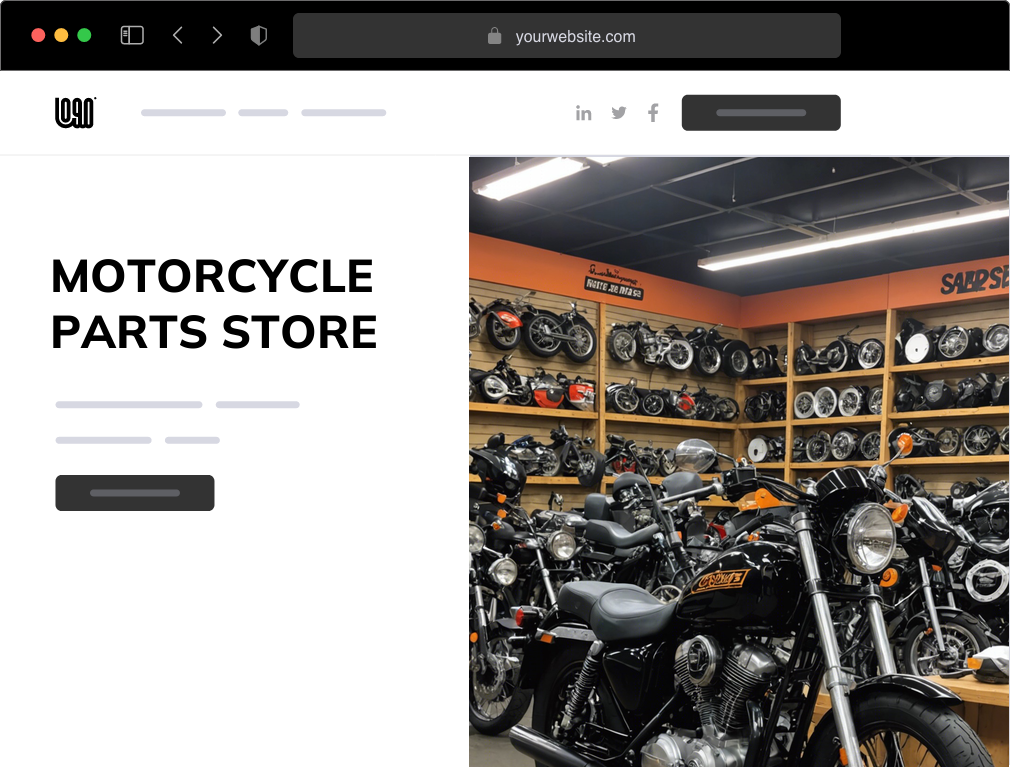An In-depth Consider Motorbike Parts: What Every Cyclist Must Know
A detailed understanding of motorcycle components is not merely helpful but crucial for any type of rider aiming to maximize efficiency and safety and security. Each element, from the engine's complex operations to the integrity of brake systems, plays a pivotal duty in the general experience and functionality of the bike. Nevertheless, past simply knowing what these parts do, it is important to appreciate how they sustain and engage one another. This interconnectedness can make the difference in between a smooth adventure and unforeseen difficulties. What ins and outs lie within this mechanical symphony that every rider should grasp?
Recognizing the Engine
The engine, commonly considered as the heart of a motorbike, is a complicated assembly of elements that work in consistency to convert fuel right into activity. At its core, the engine's main function involves the burning process, where air and fuel mix and spark within the cylinders, resulting in regulated explosions that drive the pistons. These pistons move up and down, converting chemical energy into mechanical power, which ultimately turns the crankshaft, ultimately powering the bike.

Recognizing the details of a motorcycle engine is crucial for cyclists and lovers alike. It not only provides insight into how motorcycles achieve their remarkable power and speed yet additionally help in reliable maintenance and troubleshooting, ensuring longevity and dependability when driving.
Suspension Systems
While the engine powers the motorcycle, the suspension system plays an important duty in ensuring a smooth and regulated adventure. The shock absorber is accountable for soaking up shocks from the roadway surface area, keeping tire call, and supplying security throughout cornering and stopping. It consists of 2 major parts: the front forks and the back shock absorbers.
Front forks are usually telescopic, having a springtime and moistening system. The spring prolongs and compresses to take in bumps, while the dampening system regulates the activity to avoid too much jumping. This mix makes sure the front wheel stays in contact with the roadway, offering remarkable handling and comfort.
The back suspension, generally a monoshock or twin-shock setup, functions likewise to the front suspension but is customized to support the motorbike's weight and biker - motocross gear nz. It takes care of back wheel movement, adding to the bike's overall balance and responsiveness
Suspension systems can be flexible, allowing riders to tweak preload, compression, and rebound settings according to individual choices and riding conditions. This adjustability improves efficiency by optimizing the bike's interaction with varied terrains. In recap, an effective suspension system is essential for motorcyclist comfort, safety, and the bike's managing prowess.
Brake Parts
Stopping power is a basic aspect of motorbike security, and it rests on the effectiveness of the brake elements. The main elements of a motorcycle's braking system include the brake pads, calipers, blades, and master cylinder. motocross gear nz. Each of these elements plays a crucial duty in making certain reliable stopping performance
Brake pads are essential as they create the needed friction against the blades to decrease or stop the motorcycle. Created from materials such as sintered metal or natural compounds, the choice of brake pad product substantially affects performance and long life. Calipers, housing the brake pads, apply stress to the pads when the brake lever is engaged, facilitating call with the blades.
The blades, commonly made from stainless steel or cast iron, are mounted to the wheels and function as the surface area versus which the brake pads press. Their design, including size and thickness, impacts heat dissipation and quiting power. The master cylinder, linked to the brake bar, generates hydraulic pressure sent via brake lines to the calipers, making sure constant braking force.
Regular upkeep and assessment of these parts are vital for optimal performance, protecting against wear and making sure rider safety and security on the roadway.
Tire Fundamentals
Beyond preserving durable braking systems, making sure optimal tire performance is equally substantial for bike security and effectiveness. Tires are the sole call factor between the motorcycle and the road, making their problem critical in dealing with, security, and general ride top quality.

Additionally, think about the tire's age. Rubber substances degrade with time, also if walk appears adequate. Check the sidewall for the DOT (Department of Transport) code to determine the tire's age. Commonly, replacement is recommended every five years, despite wear. Investing interest in these tire basics not just enhances performance but additionally considerably improves riding safety and security.
Electrical Solutions
In the realm of motorbike upkeep, the electric system plays an important role in making certain reputable performance and biker security. This complex network encompasses essential elements such as the battery, generator, starter electric motor, and wiring harness. Each element is vital for the smooth procedure of the bike, from ignition to illumination and interaction with different sensing units.
The battery retro motorcycle helmets works as the heart of the electrical system, giving the required power to begin the engine and operate devices. On a regular basis checking the battery's voltage and Website terminals for deterioration is important to avoid unanticipated failings. The alternator, on the various other hand, reenergizes the battery while the engine is running, guaranteeing a continuous power supply.
The starter motor is accountable for starting engine procedure, transforming electric energy into power. To preserve it, bikers should focus on any kind of unusual sounds or problems throughout startup. On the other hand, the electrical wiring harness functions as the vehicle's nerves, linking all electric elements. Making certain that the cords are cost-free and intact from damage is important for guaranteeing and stopping short circuits capability.
Final Thought

Stopping power is a fundamental facet of bike safety, and it pivots on the effectiveness of the brake components. The main aspects of a motorcycle's stopping system consist of the brake pads, calipers, rotors, and master cyndrical tube.Brake pads are essential as they produce the needed friction against the blades to slow down or quit the bike.Beyond keeping durable braking systems, ensuring optimum tire performance is just as substantial for motorcycle safety and security and efficiency.In the realm of motorcycle maintenance, the electric system plays a vital role in guaranteeing dependable efficiency and cyclist safety.